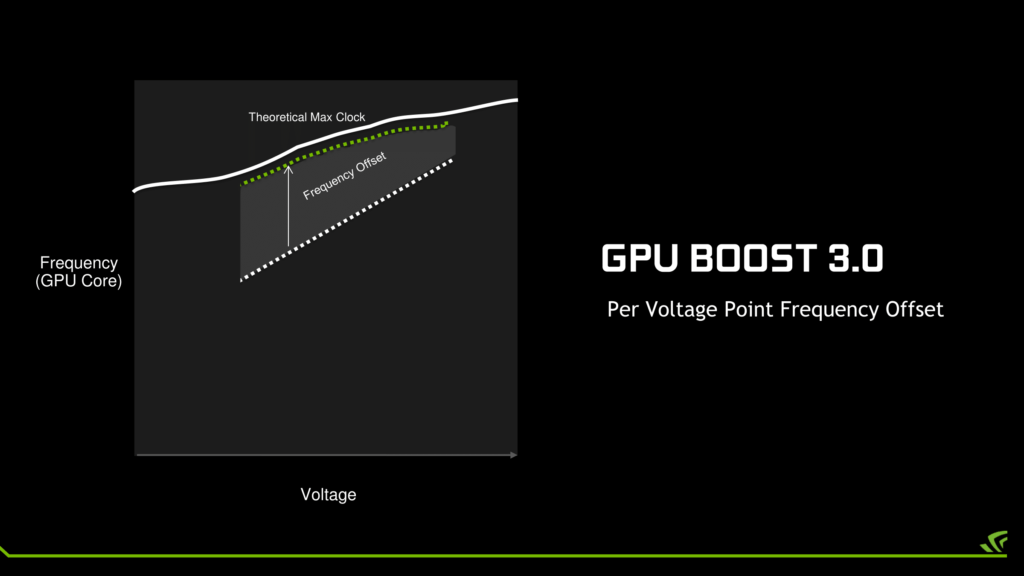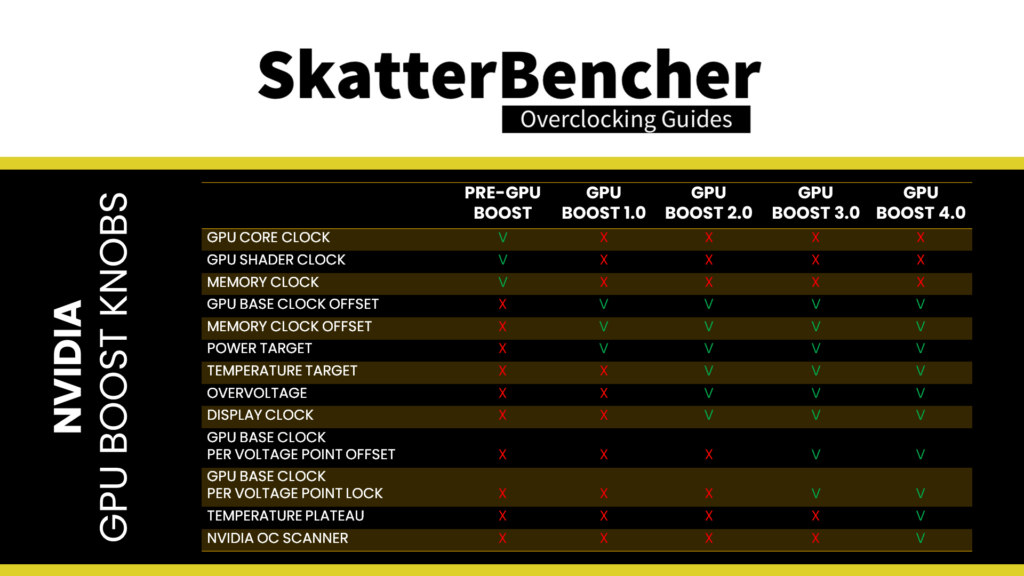NVIDIA GPU Boost 3.0 is the 3rd generation GPU clocking technique that converts available power headroom into increased GPU performance. It is the successor to the GPU Boost 2.0 technology.
With the release of the Pascal graphics cards on July 20, 2016, NVIDIA introduced GPU Boost 3.0. While advertised as a significant improvement over the previous Boost technology, it looks not much different on the surface. GPU Boost 3.0 introduces three new features:
- Per Voltage Point Frequency Offset
- Voltage Point Lock via NVAPI
- Overvolting expressed as a percentage
The main feature of GPU Boost 3.0 is that NVIDIA exposes the individual points of the GPU voltage-frequency curve to the end-user. That means enthusiasts can finetune every single point on the voltage frequency curve. That allows for greater finetuning and avoids the lost opportunity overclocking range with a fixed offset across the entire voltage-frequency curve. In addition, it also opens up the chance to undervolt the GPU at specific points of the V/F curve.

The obvious downside is that there are a lot of points on the voltage frequency curve. On Pascal GPUs there are no less than eighty (80!) individually adjustable points. NVIDIA also introduced via its NVAPI a setting to lock the GPU at a specific voltage point to assist with this process. So, any overclocking tools could allow you to test each point individually.
The last difference between GPU Boost 2.0 and GPU Boost 3.0 is that the overvoltage option is now represented as a percentage instead of the actual voltage setting. Overvolting is expressed on a percentage scale from 0% to 100%, obfuscating the higher voltage points. That hasn’t changed the underlying behavior of overvolting, meaning it still only provides access to one or more voltage points pre-calibrated by NVIDIA.
